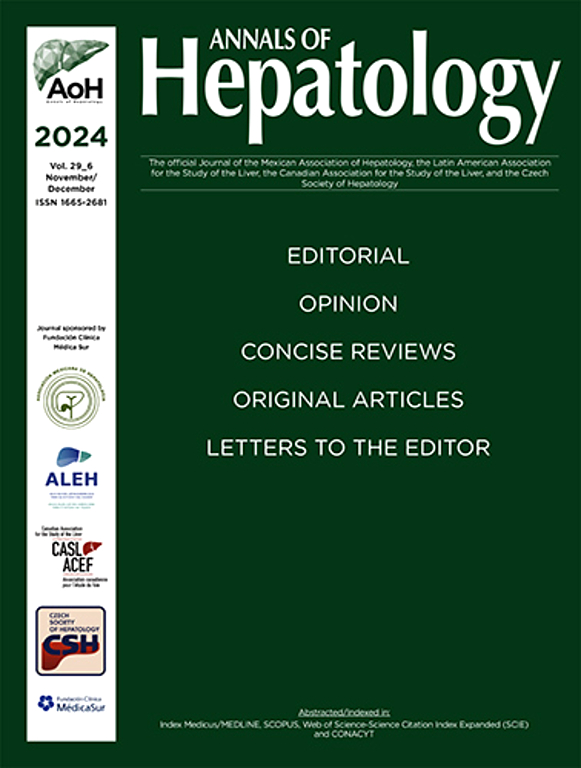Most Common Complications in Patients Post Liver Transplantation at a Hospital in Mexico.
IF 3.7
3区 医学
Q2 GASTROENTEROLOGY & HEPATOLOGY
引用次数: 0
Abstract
Introduction and Objectives
Liver transplantation worldwide presents a series of complications that need to be identified to adequately treat and prevent them; however, information about these in Mexico is limited. The objective is to report the epidemiology of these complications in a third-level hospital transplant center in Mexico
Materials and Patients
A cohort study was conducted, including post-liver transplant patients from 2019 to 2023. The presence of infectious and postsurgical complications after the event was determined, as well as the rate of both acute and chronic rejection. Data are expressed using descriptive statistics with proportions and percentages for qualitative variables and mean and standard deviation or median and range for quantitative variables.
Results
110 patients were included, 46 women and 64 men with a mean age of [insert average age]. Complications were classified according to type and timing of presentation after surgery. Regarding rejection rates, a 10.00% acute rejection was observed with a mean presentation of 7.6±6.6 months, and 2.8% chronic rejection (mean time: 17.7±8.1 months). Results are summarized in Table 1 and Figure 1.
Conclusions
Complications in liver transplant recipients are common and jeopardize both patient life and graft function. Although rejection rates remain high, our center presents a favorable epidemiology compared to reported literature, below global rates for acute rejection (15-25%) and chronic rejection (3-17%).
墨西哥某医院肝移植术后患者最常见的并发症
肝移植在世界范围内出现了一系列并发症,需要识别以充分治疗和预防。然而,在墨西哥,关于这些的信息是有限的。目的是报告墨西哥三级医院移植中心这些并发症的流行病学。材料和患者进行了一项队列研究,包括2019年至2023年的肝移植术后患者。确定事件发生后感染和术后并发症的存在,以及急性和慢性排斥反应的发生率。数据用描述性统计表示,定性变量用比例和百分比表示,定量变量用均值和标准差或中位数和极差表示。结果纳入110例患者,其中女性46例,男性64例,平均年龄[插入平均年龄]。根据手术后出现的时间和类型对并发症进行分类。在排异率方面,10.00%的急性排斥反应(平均7.6±6.6个月),2.8%的慢性排斥反应(平均17.7±8.1个月)。结果总结于表1和图1。结论肝移植术后并发症普遍存在,危及患者生命和移植物功能。虽然排异率仍然很高,但与文献报道相比,我们的中心呈现出良好的流行病学,低于全球急性排异率(15-25%)和慢性排异率(3-17%)。
本文章由计算机程序翻译,如有差异,请以英文原文为准。
求助全文
约1分钟内获得全文
求助全文
来源期刊

Annals of hepatology
医学-胃肠肝病学
CiteScore
7.90
自引率
2.60%
发文量
183
审稿时长
4-8 weeks
期刊介绍:
Annals of Hepatology publishes original research on the biology and diseases of the liver in both humans and experimental models. Contributions may be submitted as regular articles. The journal also publishes concise reviews of both basic and clinical topics.
 求助内容:
求助内容: 应助结果提醒方式:
应助结果提醒方式:


